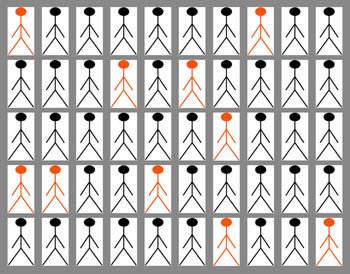
As the name suggests, simple random sampling is the simplest method of probability sampling. It means within a particular study population everyone has an equal chance of inclusion in the sample. It is considered 'fair' and therefore allows findings to be generalised to the whole population from which the sample was taken. It is sometimes called the 'lottery method' and is illustrated below.

To use the simple random sampling method, it is necessary to have lists of all elements of the population to be studied. Therefore, to select a simple random sample you need to:
A simple random sample of 25 students is to be selected from a school of 500 students. Using a list of all 500 students, each student is given a number (1 to 500), and these numbers are written on small pieces of paper. All the 500 papers are put in a box, after which the box is shaken vigorously to ensure randomisation. Then, 25 papers are taken out of the box, and the numbers are recorded. The students belonging to these numbers will constitute the simple random sample.
